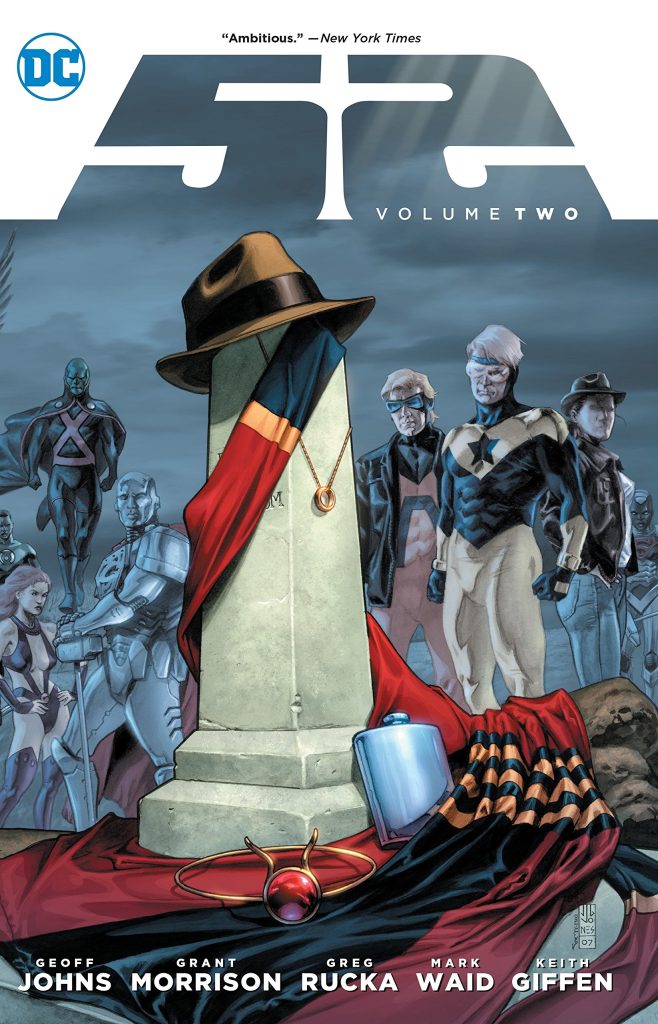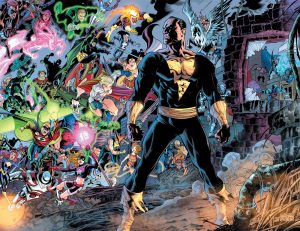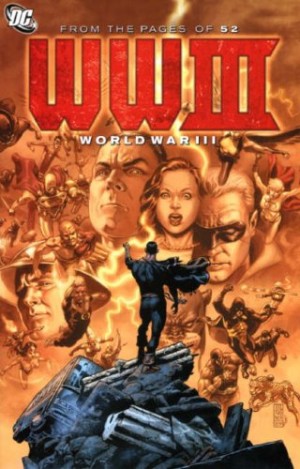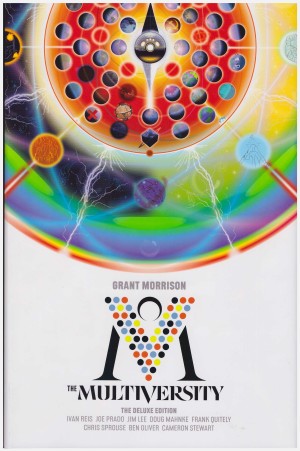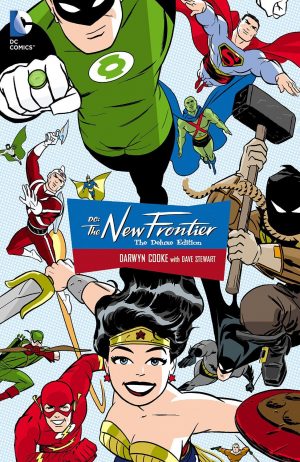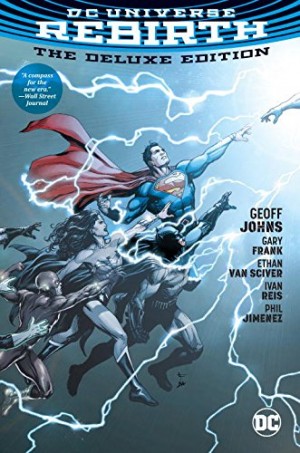Review by Ian Keogh
In 2006 DC jumped their continuity forward a year, bringing sometimes significant changes to their superhero titles. The changes were only gradually explained, and 52 was a series published weekly that addressed some of them. In the world of 52 DC’s major heroes are inexplicably absent, and the stories followed concern second string and even lesser heroes. Four writers collaborate, but while the characters cross over and interact, broadly speaking each is responsible for following some of the cast. Geoff Johns, for instance, handles what’s going on with Black Adam, Greg Rucka follows Renee Montana and Batwoman, the scenes in space with Adam Strange, Animal Man, Lobo and Starfire are down to Grant Morrison and Mark Waid takes Elongated Man on his dark journey. Plenty of other characters feature, with Booster Gold, the Justice Society and Steel among them.
This volume picks up halfway through, and in order to ensure every plot gets the space it deserves it’s noticeable that some characters don’t appear for several chapters at a time. It’s a fair while before Black Adam moves back into the spotlight, for instance, as he’s been supplanted by both other events and his own supporting cast. However, he’s definitely the leading figure over much of the final chapters. Like most of the others followed, he hits a pretty dark place.
We’re now up to eleven different pencil artists working from Keith Giffen’s layouts. The best of them are Chris Batista (sample art left), Joe Bennett, Jamal Igle (sample right), Phil Jiminez and Patrick Olliffe. Everyone’s working in a standard superhero style, but the pages of the named artists have a greater polish and dynamism combined with more attention to detail. More so than Volume One, there are some really gruesome scenes explicitly drawn.
Toward the end of Volume One there was a slight dip, where movement forward slowed down, but this picks up the pace from the start, and it’s a thrill ride all the way to the end. DC has run many crossovers, but few of them have worked as well as 52. It’s down to the care taken, in contrast to the impression often given that it’s believed fans will accept any mass teaming of superheroes. There’s care in ensuring the artistic styles don’t clash, and the already imaginative writers spark off each other, picking up on ideas someone else has come up with. There’s room for completely left field loopiness (Lobo’s space dolphin?), but the cast are treated plausibly and sympathetically, although don’t expect everyone to have a happy ending.
Superhero fans ought to enjoy this in any form, but this combines slimmer paperback editions Volume Three and Volume Four, or the entire series is found in the 52 Omnibus.
